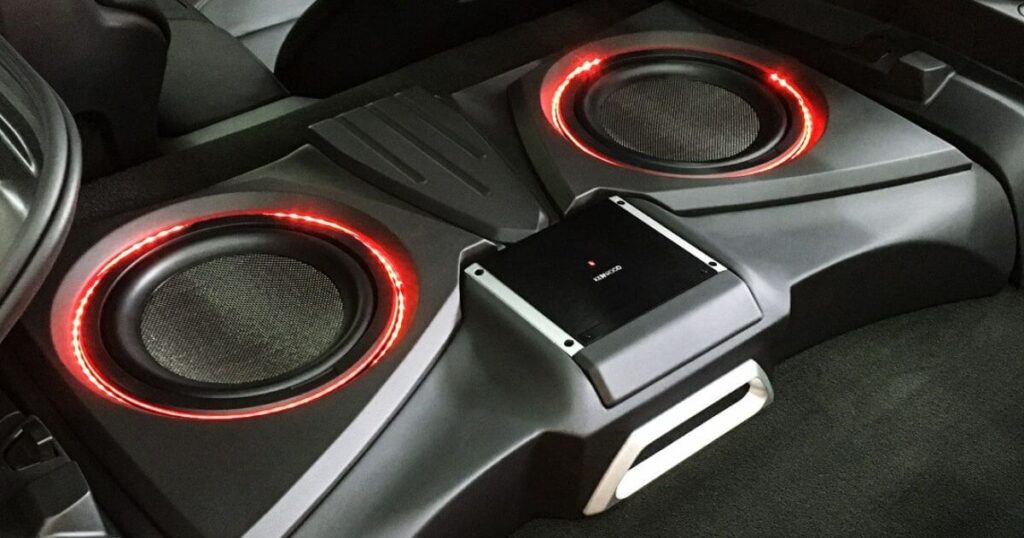Introduction
The In-Car Audio System Market is experiencing an era of innovation fueled by continuous strategic developments and emerging trends. As automotive manufacturers and audio technology providers collaborate more closely, the market is evolving to offer enhanced user experiences, smart integrations, and refined sound quality. These developments reflect a broader trend in the automotive industry—where technology, design, and personalization come together to shape the future of mobility.
Collaborations Between Automakers and Audio Brands
One of the most prominent strategic developments in the In-Car Audio System Market is the growing number of partnerships between car manufacturers and premium audio brands. These collaborations allow automotive companies to deliver customized audio solutions that reflect the identity and performance of each vehicle model.
Luxury automakers often work with high-end audio brands to create exclusive sound systems that are tuned specifically for the acoustics of each car. These partnerships are more than just co-branding; they involve deep integration and tuning processes that ensure optimal performance and an immersive audio experience. These alliances are driving innovation and setting new benchmarks in in-car entertainment.
Increasing Focus on Software-Driven Sound Customization
Modern in-car audio systems are shifting from hardware-dominated architectures to software-defined platforms. This strategic transition allows manufacturers to offer real-time customization, downloadable sound profiles, and regular performance enhancements through over-the-air (OTA) updates.
Software-defined audio systems enable users to personalize their listening environment with just a few taps. From adjusting equalizer settings to creating mood-based soundscapes, this trend allows for a more intuitive and engaging experience. As vehicles continue to become more connected, software-based customization is expected to become a standard feature.
Rise of Immersive and 3D Audio Technologies
Another significant trend shaping the In-Car Audio System Market is the rise of immersive audio formats, such as 3D surround sound and spatial audio. These technologies are designed to create a sense of depth, direction, and realism in the listening experience.
Through the strategic placement of speakers and advanced signal processing, sound can be made to feel as if it's moving around the listener, mimicking a live performance or cinematic environment. This immersive audio experience is particularly appealing in luxury vehicles, where comfort and sensory pleasure are highly valued.
Integration with Digital Ecosystems
In-car audio systems are no longer standalone features; they are part of a larger digital ecosystem that includes smartphones, cloud services, wearable devices, and smart home technologies. The trend of seamless integration is a strategic focus for many automakers and audio companies.
With features like wireless streaming, voice-activated control, and cloud connectivity, the audio system becomes a gateway to digital content and services. Users can access music libraries, podcasts, navigation updates, and more without interrupting their journey. This level of integration not only improves convenience but also adds value to the overall driving experience.
Personalization Through Artificial Intelligence
Artificial intelligence (AI) is playing an increasing role in audio system development. AI-powered features can learn user preferences over time and automatically adjust audio settings based on driving conditions, cabin occupancy, and content type.
For example, the system can raise the volume when windows are down, optimize bass response during a quiet night drive, or select playlists based on mood and time of day. This form of intelligent personalization is becoming a core trend in modern vehicles and adds a new dimension to user interaction.
Sustainable Innovation in Audio Design
Sustainability is becoming a strategic priority across industries, including the In-Car Audio System Market. Companies are now developing eco-friendly speaker materials, energy-efficient components, and compact designs that reduce environmental impact without sacrificing performance.
Lightweight audio components help improve vehicle efficiency, particularly in electric vehicles. Recyclable materials and low-power consumption designs are also becoming more common as automakers and suppliers align with global sustainability goals.
Enhanced User Interaction Through Voice and Touch
User interaction with in-car audio systems has become more refined and natural. Touchscreens, haptic feedback, and voice assistants allow users to control music, navigation, and communication with ease. This trend supports hands-free operation and safety while driving.
Manufacturers are focusing on creating intuitive interfaces that respond quickly and accurately. These enhancements reflect a strategic move toward a more human-centric design philosophy, where technology adapts to the user rather than the other way around.
Market Expansion Across Vehicle Segments
Strategically, the In-Car Audio System Market is expanding beyond premium and luxury segments. Mid-range and entry-level vehicles are now being equipped with advanced audio systems that offer excellent sound quality and connectivity. This democratization of premium audio features ensures that more consumers can enjoy a sophisticated in-car experience regardless of their vehicle’s price point.
Automakers are leveraging modular audio system designs that can be scaled according to the vehicle segment. This approach maximizes reach while maintaining quality and user satisfaction.
Conclusion
Strategic developments and emerging trends are propelling the In-Car Audio System Market into a new era of innovation and user-centric design. From immersive audio experiences and AI-driven personalization to sustainability and digital ecosystem integration, the market is evolving in ways that enrich the driving experience. These advancements are setting new standards for comfort, convenience, and connectivity, ensuring that in-car audio remains a vital component of modern automotive design. As technology continues to progress, the market will further expand its scope and influence, redefining what it means to enjoy sound on the move.





Comments